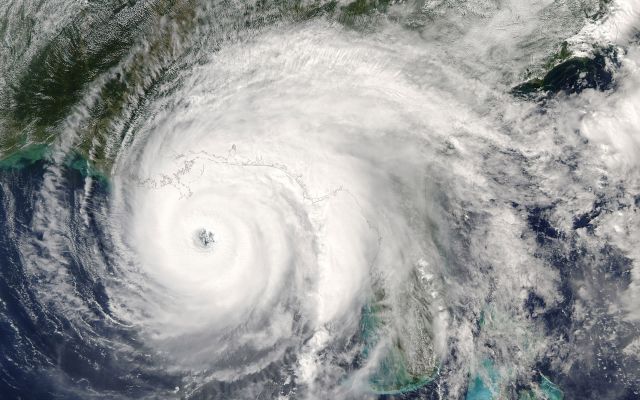Updated on November 20, 2023.
Tropical storms and other hurricanes bring heavy rain and winds that can damage buildings, block roads and knock out power. People with certain health conditions, especially those who require medication, need to have a safety plan in place in case an emergency strikes.
Here’s how you can keep yourself and your family safe and healthy before, during and after a big storm.
How to prepare before the storm
Once you find out a storm is heading your way, it’s time to prepare. Here’s a storm-ready checklist:
1. Know your evacuation routes. The National Weather Service (NWS) recommends you have a plan of action mapped out in case you are pressed for time. Discuss an evacuation plan with your family—and be sure to write it down. Keep the document in a place where everyone can easily access it.
2. Create a home safety kit. The Department of Homeland Security recommends you have the following handy:
- Enough water for each person and pet to have 1 gallon a day
- Three-day supply of non-perishable food
- Battery-powered radio with extra batteries
- Flashlight
- Whistle
- First aid kit
- Garbage bags
- Disinfecting wipes
- Phone chargers
- Duct tape
- Wrench or pliers
- Local map
- Manual can opener
Be sure that your safety kit is in an easy-to-locate area such as a kitchen counter or coffee table.
3. Set up a safety room. Stock a single room in your home with fresh water, non-perishable foods, flashlights, blankets, towels, trash bags, gloves, protective masks, pet food and any other necessities. With everything in one place, finding what you need during the storm or cleaning up afterward will be much easier.
4. Be aware of your surrounding area. The NWS recommends that you “know your zone.” If you live by the ocean or near a hazardous area or structure such as a dam, listen to safety instructions from your local news and community.
5. Prepare your medications. Make sure you know how to store drugs in case the power goes out for a few days. For example, some common medications and treatments like amoxicillin and insulin can be put in sandwich bags and placed in a cooler on ice so they remain cold without getting wet.
If you evacuate, take all your medications with you. Remember that some are temperature-sensitive and may lose potency if they’re not refrigerated. If your medication does touch the water, temperature-sensitive or not, you’ll want to replace it when you can. Don’t take any wet pills.
6. Visit an ATM and a gas station. Keep hard cash on you at all times and make sure you have a full tank of gas in case you’re asked to evacuate, the NWS recommends. You may not be able to buy gas during a state of emergency, let alone use a credit card when the power goes out.
Keep your pets safe, too
Your cats, dogs and other animals need your help and protection during storms. For starters, make sure your pet has identification. In case you get separated during the storm, they should have a collar or microchip with your family’s contact information on it. If you evacuate your home with a pet, look for pet-friendly hotels, local animal shelters or safe kennels near your temporary lodging.
Stay safe during the storm
Rough winds, hard rain and flying debris can be frightening. If you are waiting it out where you live, start by hunkering down in a safe part of your home. Stay away from windows in case of broken, flying glass.
Meanwhile, use your emergency radio to stay informed and up-to-date on the storm’s progress and any additional dangers it may bring to your area. Turn your refrigerator to the coldest setting so your food will last longer if the power goes out. Once you are in a safe place, try reaching out to friends and loved ones to let them know you are okay.
What to do after the storm
Be cautious when returning home or heading outside for the first time after a large storm. Mold may start to grow in rooms where moisture is present, outdoor debris can be dangerous and broken power lines submerged in water can create electrical hazards. Here’s what to keep in mind:
Steer clear of generator fumes. Getting too close to your generator may result in the inhalation of fumes, risking carbon monoxide poisoning. Stay at least 20 feet away. Even that may be too close, so be aware of your distance. Never use a generator indoors or near windows outdoors.
Don’t drink from the tap. If a natural disaster affects the water supply, it can cause outbreaks of infections including salmonella, hepatitis A, E.coli or norovirus. So, wait until officials have tested your water and given it the OK. In the meantime, use water or food from your safety room to avoid illness. If necessary, put tap water in a pot and boil it for 3 minutes to kill any germs.
Be careful where you step. If there is water on the ground, watch out for downed power lines. If you step in water that is charged, you are at risk for electrical shock.
Watch out for mold. As you sort through wet belongings, know that mold can grow wherever there is heavy moisture. Items like pictures, books, clothes and blankets are breeding grounds for it. Throw moldy items out, just in case. It’s also smart to avoid recirculating your air-conditioning or furnace heat until you’re sure you don’t have mold growth. Be sure to change their filters, as well.
Keep medication close. Keep all medication nearby, including asthma and allergy drugs, just in case you lose power again.
While no one can predict exactly how a storm will affect a community until it hits, taking precautions is the best thing you can do to keep your household safe. Remember to prepare, try to remain calm and follow the advice of weather experts and state officials.







